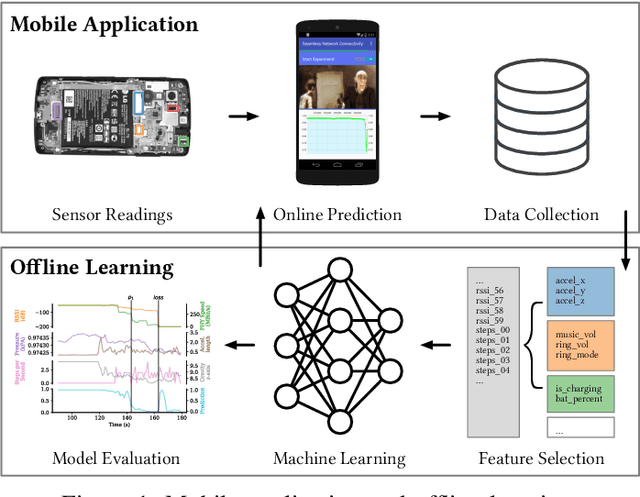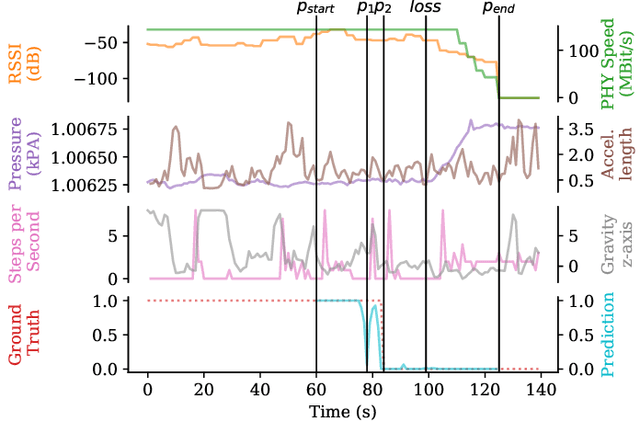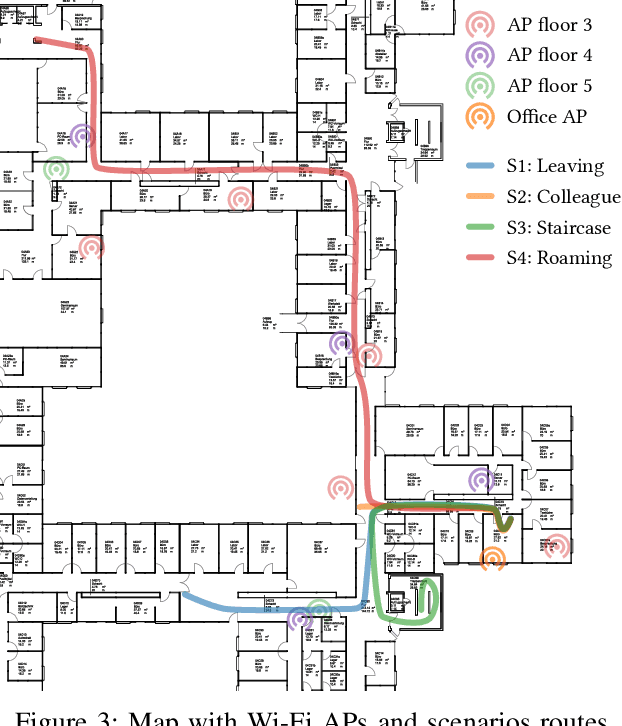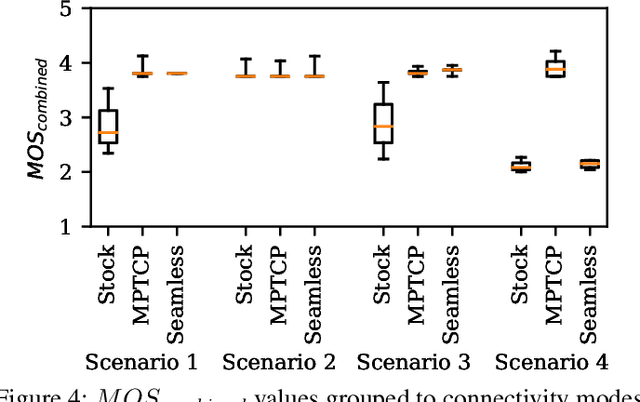Denny Stohr
Learning Wi-Fi Connection Loss Predictions for Seamless Vertical Handovers Using Multipath TCP
Jul 24, 2019



Abstract:We present a novel data-driven approach to perform smooth Wi-Fi/cellular handovers on smartphones. Our approach relies on data provided by multiple smartphone sensors (e.g., Wi-Fi RSSI, acceleration, compass, step counter, air pressure) to predict Wi-Fi connection loss and uses Multipath TCP to dynamically switch between different connectivity modes. We train a random forest classifier and an artificial neural network on real-world sensor data collected by five smartphone users over a period of three months. The trained models are executed on smartphones to reliably predict Wi-Fi connection loss 15 seconds ahead of time, with a precision of up to 0.97 and a recall of up to 0.98. Furthermore, we present results for four DASH video streaming experiments that run on a Nexus 5 smartphone using available Wi-Fi/cellular networks. The neural network predictions for Wi-Fi connection loss are used to establish MPTCP subflows on the cellular link. The experiments show that our approach provides seamless wireless connectivity, improves quality of experience of DASH video streaming, and requires less cellular data compared to handover approaches without Wi-Fi connection loss predictions.
Collaborations on YouTube: From Unsupervised Detection to the Impact on Video and Channel Popularity
May 01, 2018



Abstract:YouTube is one of the most popular platforms for streaming of user-generated video. Nowadays, professional YouTubers are organized in so called multi-channel networks (MCNs). These networks offer services such as brand deals, equipment, and strategic advice in exchange for a share of the YouTubers' revenue. A major strategy to gain more subscribers and, hence, revenue is collaborating with other YouTubers. Yet, collaborations on YouTube have not been studied in a detailed quantitative manner. This paper aims to close this gap with the following contributions. First, we collect a YouTube dataset covering video statistics over three months for 7,942 channels. Second, we design a framework for collaboration detection given a previously unknown number of persons featuring in YouTube videos. We denote this framework for the analysis of collaborations in YouTube videos using a Deep Neural Network (DNN) based approach as CATANA. Third, we analyze about 2.4 years of video content and use CATANA to answer research questions providing guidance for YouTubers and MCNs for efficient collaboration strategies. Thereby, we focus on (i) collaboration frequency and partner selectivity, (ii) the influence of MCNs on channel collaborations, (iii) collaborating channel types, and (iv) the impact of collaborations on video and channel popularity. Our results show that collaborations are in many cases significantly beneficial in terms of viewers and newly attracted subscribers for both collaborating channels, showing often more than 100% popularity growth compared with non-collaboration videos.
 Add to Chrome
Add to Chrome Add to Firefox
Add to Firefox Add to Edge
Add to Edge